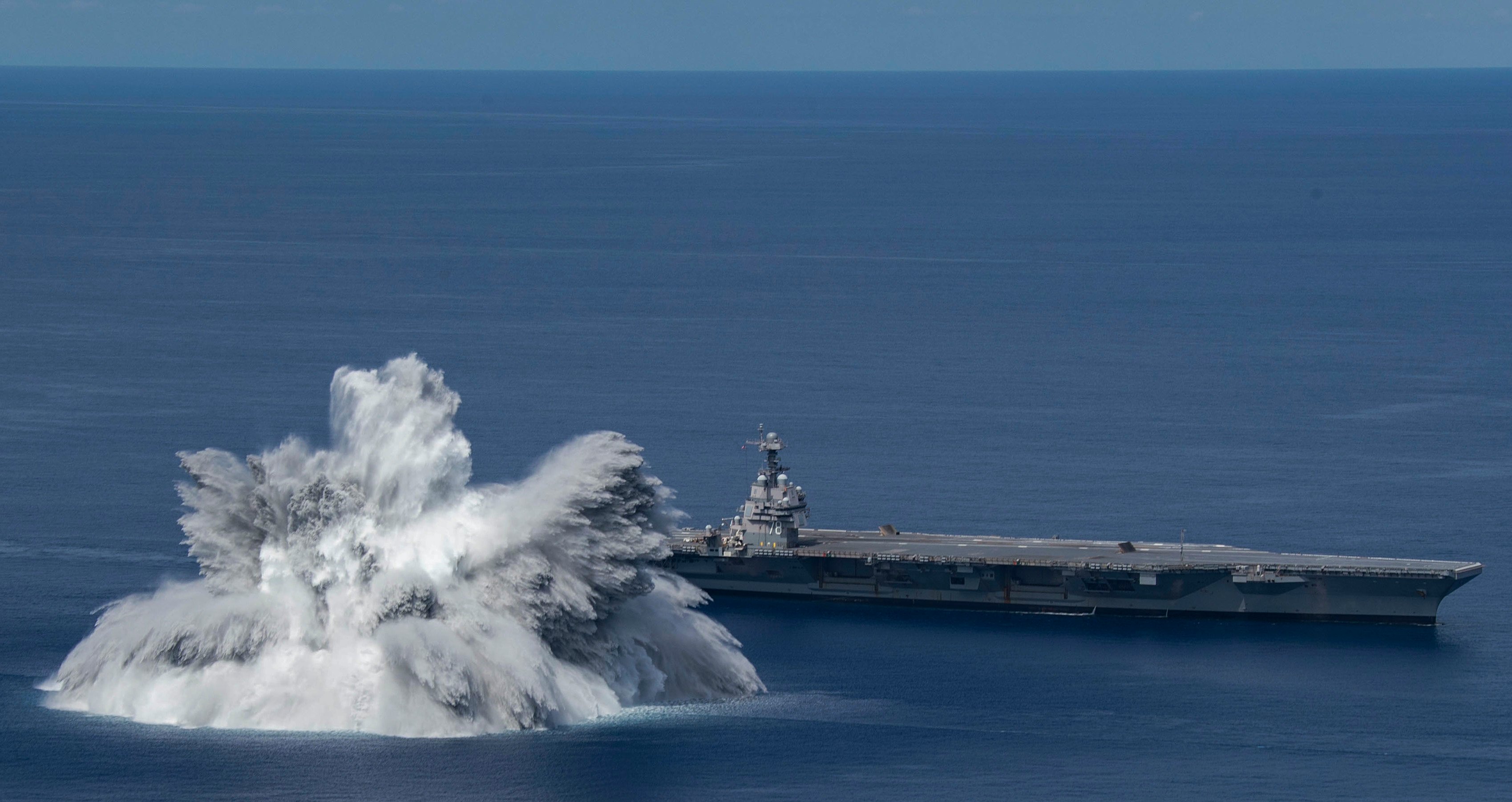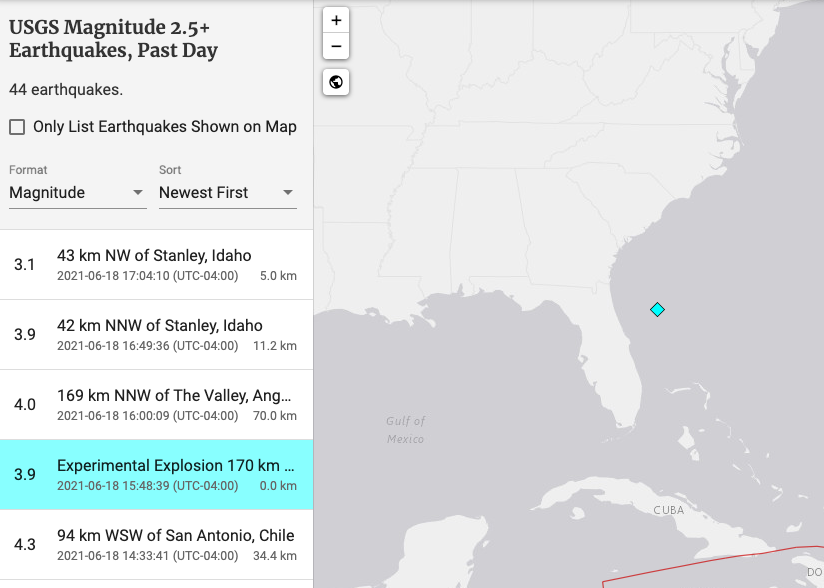
This post has been updated with additional footage from the shock trial.
The Navy blasted its newest carrier with thousands of pounds of explosives in the Atlantic Ocean on Friday to simulate how the ship would perform in battle conditions, according to images released by the service and government earthquake monitors.
Wired with sensors to measure the effects of the shock, USS Gerald R. Ford (CVN-78) was hit with the blast about 100 miles off the Florida coast just before 4 p.m. Friday, according to the U.S. Geological Survey that registered the blast as a 3.9 magnitude earthquake.
“The first-in-class aircraft carrier was designed using advanced computer modeling methods, testing, and analysis to ensure the ship is hardened to withstand battle conditions, and these shock trials provide data used in validating the shock hardness of the ship,” the service said in a Saturday statement.
“The U.S. Navy has conducted FSSTs over several decades, most recently for the Littoral Combat Ships USS Jackson (LCS-6) and USS Milwaukee (LCS-5) in 2016; as well as for the San Antonio-class amphibious transport dock USS Mesa Verde (LPD-19) in 2008, the amphibious assault ship USS Wasp (LHD 1) in 1990, and the guided-missile cruiser USS Mobile Bay (CG-53) in 1987. The last aircraft carrier to execute FSST was USS Theodore Roosevelt (CVN-71) in 1987.”
Ford commanding officer Capt. Paul Lanzilotta told USNI News in March aboard the carrier that the crew had been busy preparing for the event.
“That’s quite a bit of work when you have a ship with 5,000 spaces in it, so we have to prepare all of our gear,” he said.
“We’re also going to prepare the crew: so the crew has to know what to expect, they need to practice their damage control procedures because that’s something that we all need to be good at, and when we shock the ship we need to make sure that we have the ship in as ready a condition as we can.”

The trials come at the conclusion of a post-delivery test and trials period for the carrier in which the Navy has worked to prepare Ford for its first deployment.
The carrier was scheduled for three separate explosions, but the service may cap the tests at two blasts, USNI News understands.
Shock testing the first-in-class Ford, rather than second-in-class John F. Kennedy (CVN-79), was driven in Congress by the late Sen. John McCain (R-Ariz.). He insisted on the trials to prove the reliability of the new carrier class before its first deployment.





